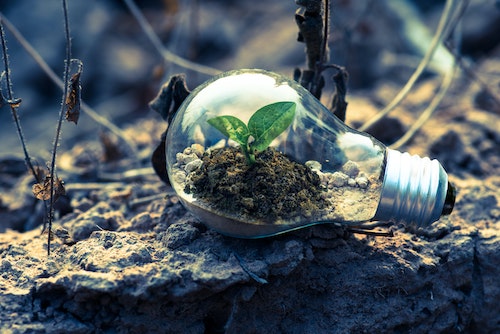There are many ways to “go green” and that includes making your home more eco-friendly. Here are six easy ways that you and your family can help the environment at home.
1. Start Composting
Most of us are used to recycling, but have you ever thought about composting? It’s easy to believe that our food just decomposes in landfills, but this isn’t the case at all. Methane gas is produced when decomposing food is packed under layers of trash, and methane is at least 28 times more potent than carbon dioxide. Composting is easier than you may think. You can even avoid the smell by storing a compost bag in your freezer to eliminate odors. When your bag is full of produce, just take it out of the freezer and dump it into your compost bin outside. For more information, check out this helpful composting guide.
2. Switch to Reusable Water Bottles
Another simple change is buying the whole family reusable water bottles. This is a small investment to save money and reduce the amount of wasted one-use plastic bottles in the long run. Did you know only about 23% of all plastic bottles get recycled? The rest of it simply ends up in landfills and in the ocean. This tip doesn’t just apply to one-use plastic water bottles. Make a list of one-use plastic items that you use daily and see if you can upcycle or replace them with something reusable.
3. Use LED Light Bulbs
Another simple way to make your home more eco-friendly while reducing your electric bill is to make the switch to LED light bulbs. Not only are LED lightbulbs more energy-efficient, but they also come in a variety of color temperatures so that you can choose between a spectrum of warm and cool light. Ordinary incandescent light bulbs only convert 10% of energy into light while the rest is wasted as heat. LED light bulbs convert 95% energy into light.
4. Line Dry When it’s Sunny
One way, and possibly the most inexpensive and easiest way to make your home more eco-friendly, is to line dry instead of machine dry. We understand that line drying isn’t always an option, especially in the Pacific Northwest. However, if you’re able to do it during warmer months, the planet will thank you. Line drying can reduce your house’s carbon footprint by up to 2,400 pounds per year, and you get to save money while doing it.
5. Purchase a Programmable Thermostat
If you want to get a little fancy, then we recommend investing in a programmable thermostat. This is a bit of an investment upfront. But in the long run, it saves money, helps the environment, and modernizes your home. Smart thermostats cut down on fossil fuel energy sources by learning our heating and cooling preferences. With this information, the thermostat can lower your house’s demand for electricity produced by power plants and reduce carbon emissions.
6. Invest in Solar Panels
Solar panels have become increasingly popular in the last decade. Not only will they help save on your utility bill, but they are incredibly significant for the planet. Over 25 years, a typical solar panel installation is the equivalent of 135 tons of carbon dioxide emissions avoided, 440,000 miles not driven, and 2.3 acres of trees planted. Solar panels may be on the pricier side, but many solar panel contractors offer payment plans. Additionally, houses with solar panels can sell for up to 4.1% more than homes without solar panels.
 Facebook
Facebook
 X
X
 Pinterest
Pinterest
 Copy Link
Copy Link
